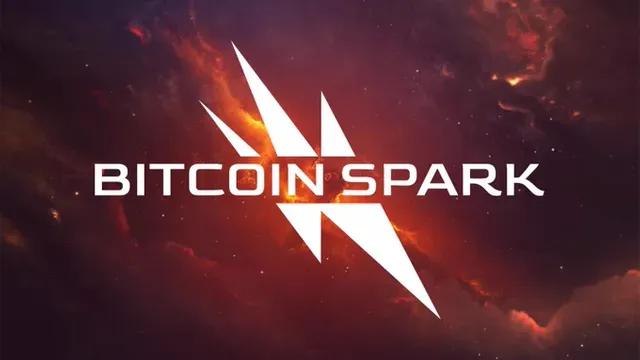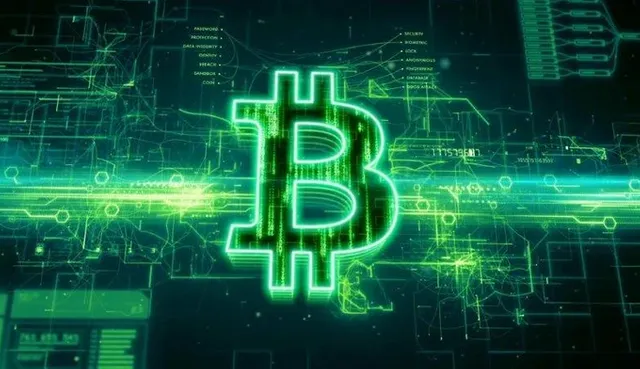BITCOINSPARK
BITCOINSPARK

INTRODUCTION
In the fast-changing environment of digital currencies, the search for a cryptocurrency that is safe, efficient, and user-friendly has been an ongoing problem. With the launch of Bitcoin Spark, we are pleased to provide a game-changing solution that overcomes the obstacles presented by existing cryptocurrencies and paves the way for a new age of digital transactions.
Bitcoin Spark is a cutting-edge cryptocurrency that was developed with the goal of delivering unrivaled levels of safety, speed, and scalability to its users. This technical whitepaper goes into the revolutionary design and features that distinguish Bitcoin Spark distinct from other cryptocurrencies, such as Bitcoin and Ethereum. Specifically, the document focuses on Bitcoin Spark's Lightning Network. Bitcoin Spark intends to transform how we understand and use digital currencies in our day-to-day lives by using cutting-edge blockchain technology, complex consensus algorithms, and a novel governance architecture. This is done with the intention of making digital currencies more accessible and usable.
In the following sections, we will investigate the fundamental aspects of Bitcoin Spark, such as the technology that lies behind it, the network architecture that supports it, and its tokenomics. In addition to this, we will talk about the issues that it aims to answer as well as the different use cases that it permits. When you reach the conclusion of this whitepaper, you will have a thorough grasp of the great potential that Bitcoin Spark possesses in revolutionizing the landscape of cryptocurrencies and determining the future of digital transactions. You will also have gained an insight of how this whitepaper was written.
BITCOIN: A BRIEF HISTORY
BITCOIN'S EXTROPIANS AND CYPHERPUNKS BELIEVE IN A DECENTRALIZED FUTURE
Two movements from the late 20th century, the Extropians and the Cypherpunks, may be traced back to the origins of Bitcoin's ideology. A group of futurists known as the Extropians advocated for the use of technology to improve human health and intelligence in the far future. One of their main aims was to develop a new kind of money that was independent of federal regulation, since they regarded the internet as a means to improve people's lives. Cypherpunks, on the other hand, were a group of privacy advocates who worked to develop technologies that ensured users' anonymity while still facilitating safe online interactions. They realized that encryption was essential to achieve their aim, therefore they set out to create a wide range of cryptographic systems and tools.
Their goals were so similar that they eventually started to affect one another. There was a shared belief among Extropians and Cypherpunks in the efficacy of decentralization and the potential of technology to undermine established authority among these two movements. What they proposed would later form the basis for the development of Bitcoin and other digital currencies.
It wasn't only Bitcoin that had the notion of a digital currency untethered from a single governing body. The ideas of Extropians and Cypherpunks spurred the creation of many digital payment systems in the early 1990s. Cryptography was the foundation for many of the first digital payment systems, which allowed for anonymous and secure transactions. While some had initial success, most ultimately fizzled out due to lack of general acceptance.
THE EVOLUTION OF BITCOIN AND OTHER DIGITAL CURRENCY SYSTEMS
Several attempts were attempted to develop digital currencies that would allow for safe transactions without the requirement for a trusted third party before Bitcoin emerged. Digital currencies like Digicash, e-gold, and Bit Gold are among the first of their kind. In the early 1990s, cryptographer and privacy advocate David Chaum created a digital currency called digicash. Digital tokens and encryption were utilized in this electronic payment system to keep financial dealings private and secure. Digicash, on the other hand, never caught on because of problems with regulation and its centralization.
Douglas Jackson and Barry Downey introduced e-gold in 1996 as one of the first attempts at creating a digital currency. Users of this platform may buy and sell digital tokens backed by physical gold. Despite having millions of users throughout the world at its peak, the widespread legal and regulatory issues that plagued e-gold eventually led to its demise in 2009. To create a decentralized digital money using cryptographic proof-of-work, Nick Szabo suggested Bit Gold in 1998. Bit Gold was an important concept that influenced the development of Bitcoin and other digital currencies even though it was never completely implemented.
THE ORIGINS OF BITCOIN
Bitcoin uses cryptography to secure financial transactions and regulate the issuance of new coins. In 2008, someone using the moniker Satoshi Nakamoto released it to the public. First proposed in a whitepaper entitled "Bitcoin: A Peer-to-Peer Electronic Cash System," Bitcoin was distributed on a cryptography-related mailing list.
On January 3, 2009, Satoshi Nakamoto mined the first Bitcoin block, also known as the genesis block, making the Bitcoin network live. Bitcoin's first transaction took place on January 12, 2009, when Satoshi Nakamoto sent 10 BTC to Hal Finney, a software developer. In the beginning, only a small subset of people who were interested in Bitcoin's technological potential and the concept of a decentralized currency used it.
As the Bitcoin network expanded, it caught the interest of more people, including financiers, business owners, and software engineers. Bitcoin's market value skyrocketed as more and more merchants began accepting the cryptocurrency as payment. As a result of Bitcoin's success, a wide variety of related services and products—such as wallets, exchanges, and mining hardware—have emerged to support the cryptocurrency.
THE BITCOIN SPARK NETWORK MAY BE ROUGHLY BROKEN UP INTO FOUR TIERS, EACH OF WHICH OPERATES ON A CYCLICAL BASIS:
LAYER OF EXECUTION: The selection of validators takes occur on this layer, which is where blocks are created. The Bitcoin Spark validator selection method will be used for the running of this execution layer. This approach does not automatically assign a validator depending on the amount of a transaction.
LAYER OF CONSENSUS: Before indexing the new block, this layer makes sure that all of the validators have come to the conclusion that the block may be used. The process of reaching agreement is an additional step that helps to protect the network from intrusion attempts.
PROSPECTING THE MINING LAYER: This layer operates in a manner that is entirely distinct from that of the other levels, and it is responsible for making it possible for the Bitcoin Spark network to provide the processing power product.
BENEFITS OF STACKING: This layer reads the mining layer and distributes rewards for miners according on the information it finds on the execution layer. The rewards layer is only able to read summaries of the computational data and does not have access to the encrypted data that is being passed around within the Bitcoin Spark product.

CONCLUSION
The Bitcoin Spark network actively seeks out and rewards validators. The Bitcoin Spark network is extremely lightweight, unlike other resource-heavy networks that basically "waste" energy validating transactions. This makes it possible for lower-power devices to run the network. This allows for a far larger number of validators, which increases security while avoiding the problem of network strangulation that other blockchains would have if there were too many validators.
With this feature, an endless number of devices may validate transactions and provide processing power to the Bitcoin Spark network, which increases the network's capacity and the overall security of the blockchain.
By having a more welcoming stance, Bitcoin Spark will attract a larger user base; this is because more participation and engagement within the network leads to a greater sense of value and contribution, which in turn leads to an expansion of the network's potential.
FOR MORE INFORMATION VISIT:
WEBSITE: https://bitcoinspark.org/
TWITTER: https://twitter.com/BitcoinSparkOrg
TELEGRAM: https://t.me/BitcoinSpark
WHITEPAPER:https://bitcoin-spark-foundation.gitbook.io/bitcoin-spark-whitepaper/bitcoin-spark-overview/introduction
STOCKTWITS: https://stocktwits.com/BitcoinSpark
ANN: https://bitcointalk.org/index.php?topic=5462534.0#post_
MEDIUM: https://medium.com/@bitcoinspark
AUTHOR:
Bitcointalk Username: Syalom Gumolili
Bitcointalk profile link: https://bitcointalk.org/index.php?action=profile;u=3365127
Wallet Address: 0x75D1B4077CcBA32c4997D1ac31F33B96B30D1Ad1
Komentar
Posting Komentar